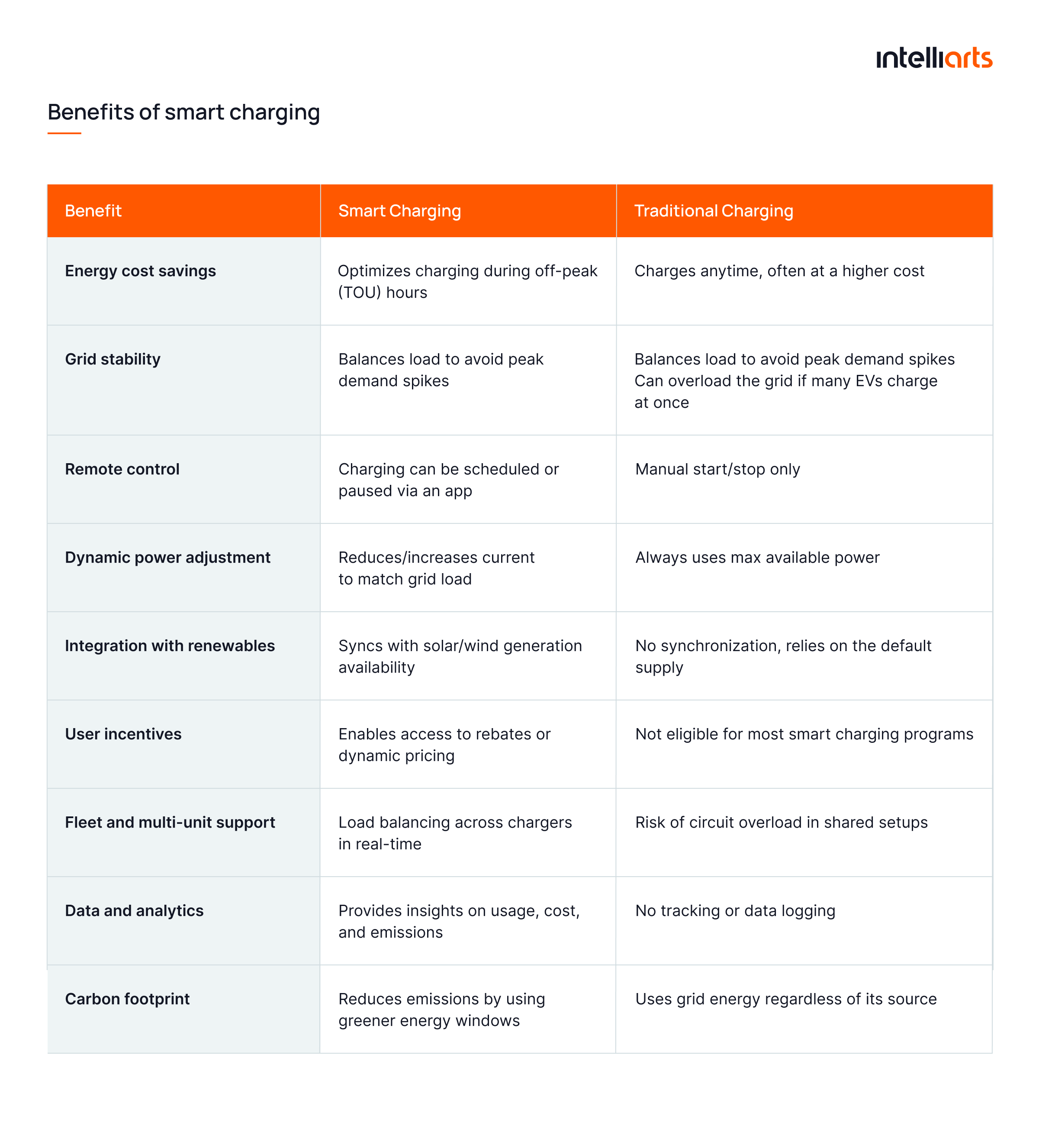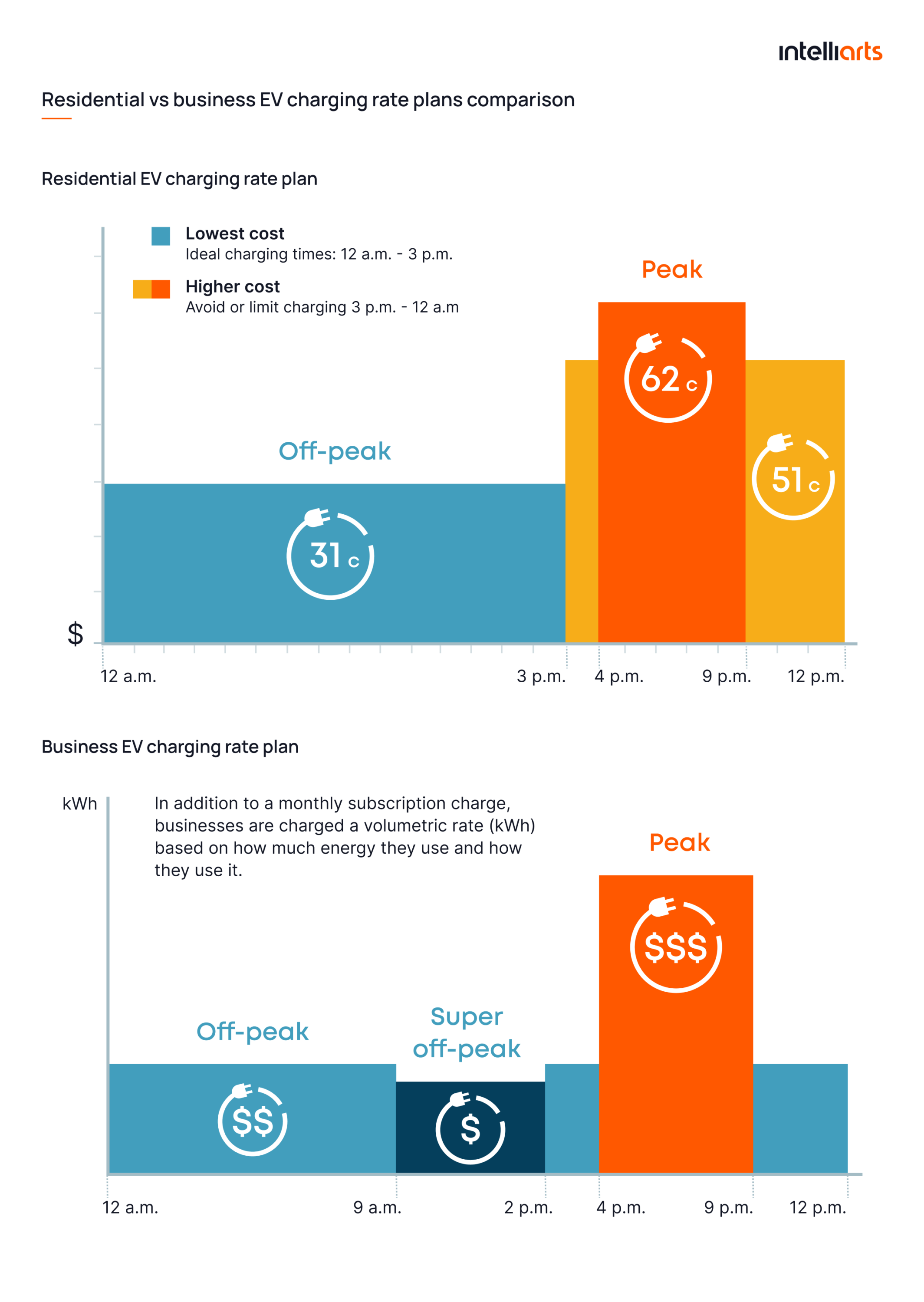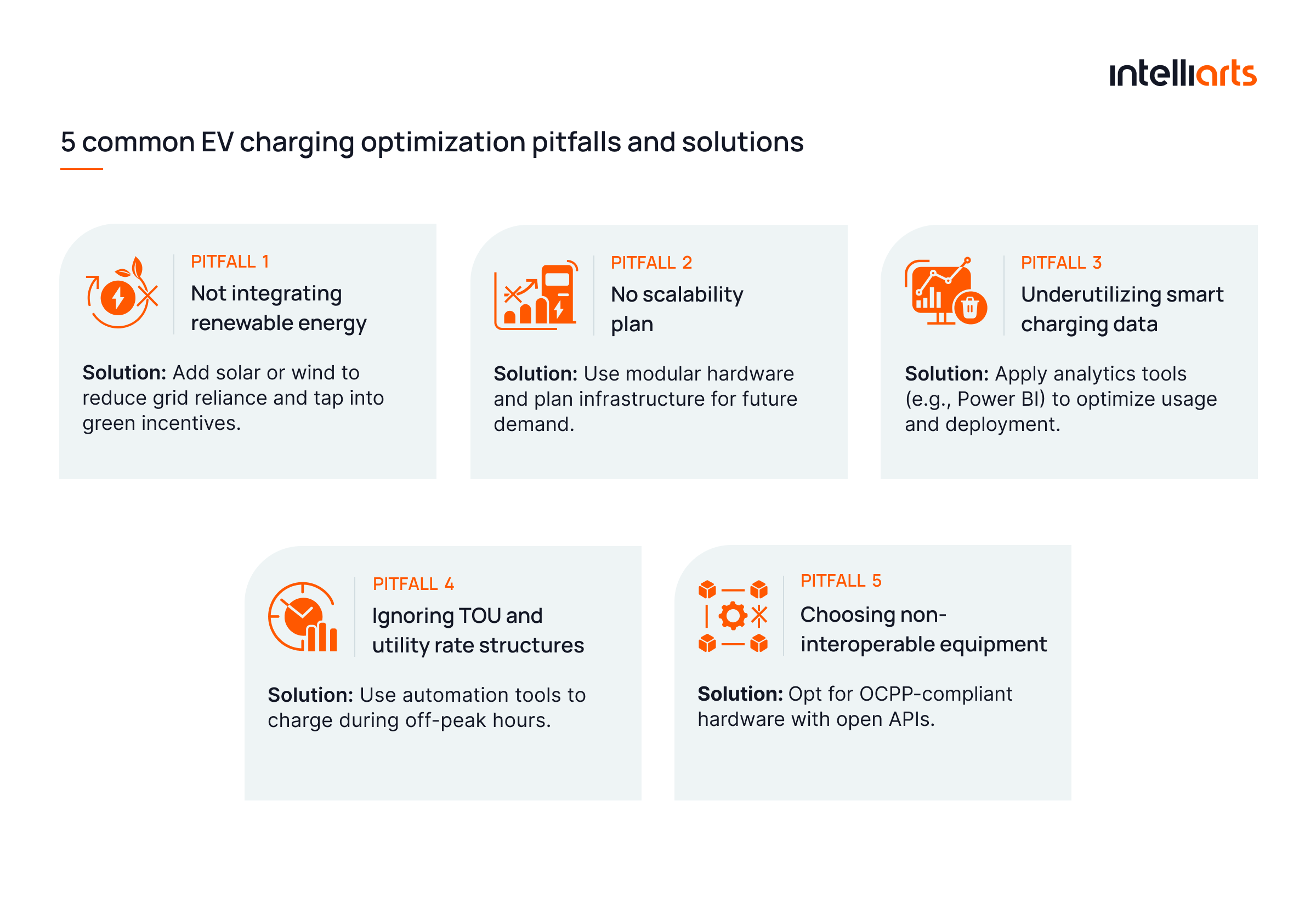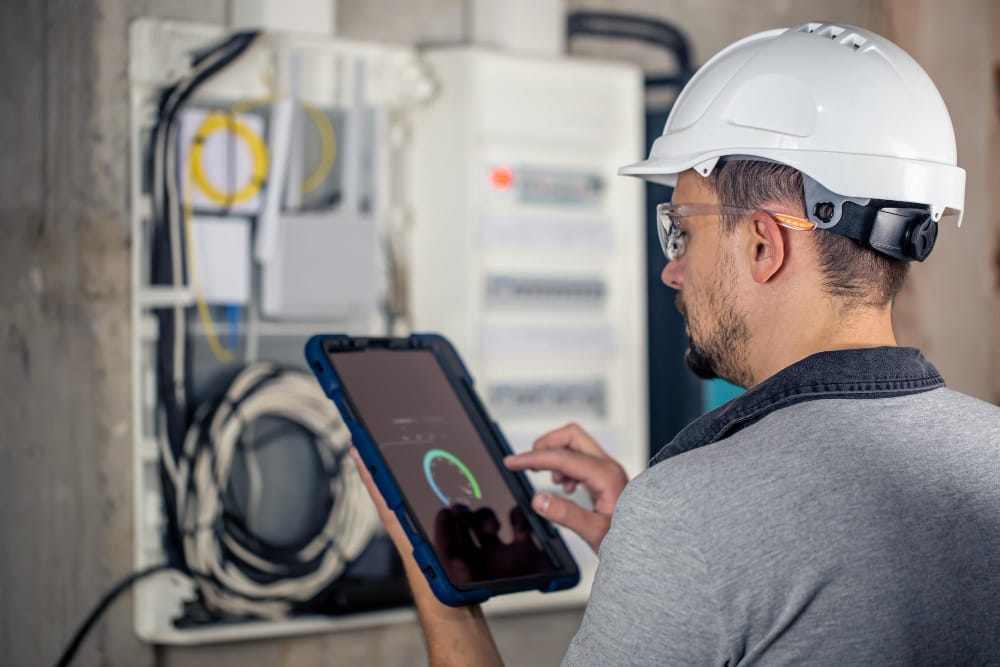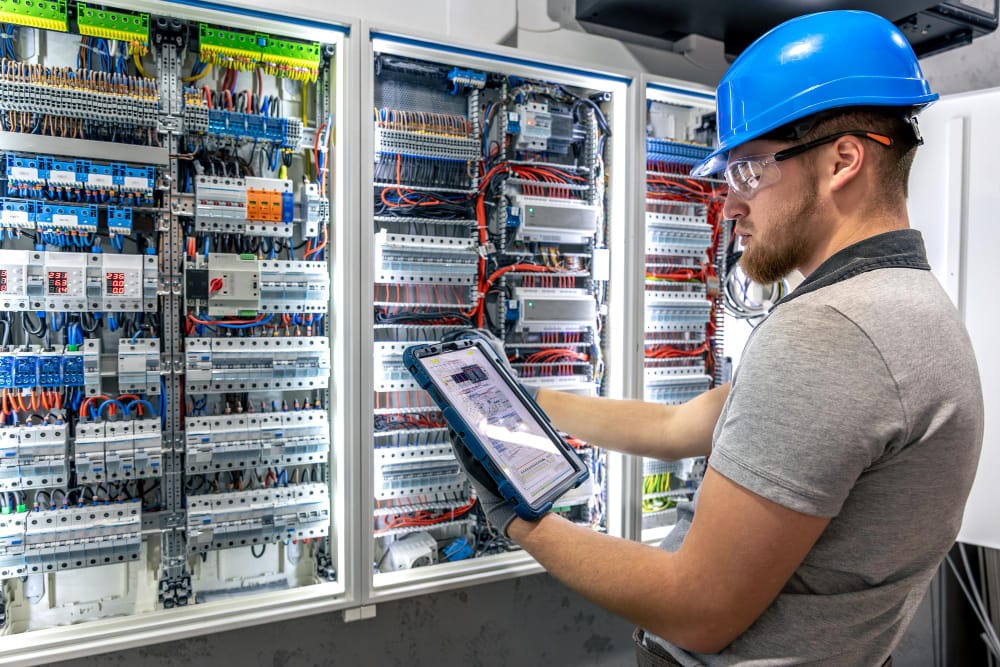The US alone is projected to require about 28 million EV chargers by 2030, with the majority being Level 1 and Level 2 chargers in private homes, workplaces, and multifamily properties. These stats connect well with the evidence that smart EV charging can save 15% to 30% of electricity costs. The big idea? EV charging providers have a lot to offer to the market, especially if they implement cost-effective EV charging optimization.
In this post, you, as an EV charging business, will learn 4 best strategies for cost-effective, more profitable charging. From leveraging time of use (TOU) charging to scalability tips, using renewable energy sources, and data-driven optimization, you’ll have a firm grasp of all that and more. You’ll also get to know some common pitfalls and find out how to avoid them by the end of the post.
Smart charging: The foundation of cost efficiency in EV industry
Smart charging is an intelligent approach that optimizes the charging of electric vehicles (EVs) based on factors like energy demand, grid capacity, electricity prices, and user preferences.
There is a clear path to a sustainable-energy Earth. It doesn’t require destroying natural habitats. It doesn’t require us to be austere and stop using electricity and be in the cold or something. — Elon Musk
Explore the key benefits of smart charging, compared to traditional charging methods, in the table below:
Let’s proceed with reviewing four EV charging strategies suitable for any energy business, from a startup to an established EV charging network.
Strategy #1: Leveraging Time-of-Use (TOU) EV сharging
Time-of-Use EV charging is a pricing strategy where electricity costs vary based on the time of day.
Time-of-Use (TOU) rates are defined by utility companies, typically under the regulation of a public utilities commission or energy regulatory authority in each region. Here’s the breakdown of providers who are involved in defining and reporting TOU prices:
#1 Utility providers. E.g., PG&E, Con Edison, EDF. They provide TOU rate structures based on supply-demand patterns, infrastructure needs, and energy source costs.
#2 Regulatory bodies. E.g., CPUC in California, Ofgem in the UK, NERC in the US. Such bodies approve or modify TOU plans to ensure fairness, grid stability, and consumer protection.
#3 Grid operators. E.g., CAISO, PJM. These providers supply real-time data on grid load and rates that influence TOU planning.
An EV charging business should understand that utility providers and regulatory bodies define electricity costs and rates, while grid operators, which are direct providers of electricity to businesses and individuals, only report what the charges are at a particular time of the day.
At the most basic level, TOU explains why rates are lower during off-peak hours (e.g., overnight) and higher during peak demand times (e.g., early evening).
Now, when the concept of this EV charging strategy and the parties involved are defined, we can delve into TOU models.
Understanding TOU rates and pricing models
Here’s the breakdown of TOU rates and the hours they are respectively effective for:
- Peak hours. High demand periods (e.g., 4–9 PM). Highest rates.
- Off-peak hours. Low demand times (e.g., 10 PM–6 AM). Low rates.
- Super off-peak hours. Extra low demand times (e.g., 9 AM–2 PM). Lowest rates.
- Mid-peak hours. Transitional periods with moderate rates.
As for TOU pricing models, set and approved, once again by utility providers and regulatory bodies, they are the following:
- Static TOU: Same daily schedule year-round.
- Seasonal TOU: Different rates based on time of year.
- Dynamic TOU (Real-time pricing): Rates change hourly based on wholesale prices or grid load.
For consumers and smaller businesses, static or seasonal TOU is the most common option, while larger EV networks may leverage real-time pricing TOU options.
The comparison of residential vs. business EV charging rate plans on the example of California – PG&E is shown in the infographic below:
As you can see, businesses have slightly different TOU options compared to those effective for residents. Based on this example of PGE, they also pay subscription costs in addition to the volumetric rate.
Automation tools for TOU scheduling
The key question, around which this post is centered, is how to achieve a cost-effective EV charging optimization in business. As you could already note, TOU is basically several new factors in the already data-intensive scheduling calculations. So, the response here is the usage of specialized automation tools for EV charging that takes into account the TOU rates.
Examples are the following:
#1 ChargeLab
Cloud-based EV charger management with automated TOU pricing integration for utility programs. Supports Open Charge Point Protocol (OCPP).
Website: https://www.chargelab.co/
#2 Ampcontrol
AI-driven smart charging platform offering automated TOU scheduling, load management, and grid-responsive charging strategies.
Website: https://www.ampcontrol.io/
#3 Ev.energy
This platform automates charging during the cheapest and cleanest energy windows. It can integrate directly with utilities and supports smart home charging.
Website: https://ev.energy/
#4 Emporia Energy
Home energy management system with TOU-aware EV charging, solar optimization, and detailed usage analytics.
Website: https://www.emporiaenergy.com/
Note. The provided software solutions are examples of what you might opt for from the smart EV charging tools available on the market, rather than your ideal options. You’ll likely need a custom data analytics solution or advanced customization of a third-party one. Both a solution and a service that ML development agencies can provide.
Explore details on smart EV charging data analytics opportunities in another blog post by Intelliarts.
Strategy #2: Infrastructure selection & strategic scalability
This EV charging station planning strategy is basically a combination of two aspects. These are short-term considerations — infrastructure selection for current business purposes and long-term considerations — strategic scaling in the future. Let’s delve into these two strategy components separately, starting with infrastructure selection:
Infrastructure selection
Beyond legal considerations, EV infrastructure strategy revolves around the selection of physical locations, ensuring sufficient electrical capacity, acquiring supporting systems, and more. While it’s hard to predict what actions a particular business should take, here are some suggested priorities:
- Conduct a site selection analysis. This should include the evaluation of high-traffic areas, EV adoption trends, and accessibility.
- Make a grid capacity assessment. Coordinate with utilities to assess available load and plan upgrades if needed.
- Decide on charger type allocation. Decide between Level 2, DC fast chargers, or mixed infrastructure based on use cases.
- Consider power distribution. Unless power distribution is pre-planned by, for example, a business estate owner, you need to set up wiring, transformers, breaker panels, and other electrical system components.
- Conduct physical layout planning. Optimize charging station placement, prioritizing user convenience, safety, and space efficiency.
Strategic scalability
Strategic scalability ensures your EV charging infrastructure can grow in line with rising EV adoption, user demand, and evolving technology, without requiring major overhauls. Key aspects to take into consideration here are the following:
- Stick to standardized equipment choices: Select only open-protocol chargers (e.g., OCPP-compliant) for easier interoperability.
- Data-driven growth planning. Use software platforms that scale easily across new stations, users, and energy sources as the data stream expands. On top of that, utilize analytics to monitor usage patterns and identify optimal expansion timing.
- Partnership development. Build relationships with property owners, utilities, and municipalities. This may get you better TOU pricing, faster rollout times, and more.
- Future-proof technology readiness. Ensure you stay or plan for becoming compatible with upcoming technologies like V2G (Vehicle-to-Grid) or wireless charging.
Explore the predictive maintenance analytics success story by Intelliarts
Strategy #3: Adding renewable sources of energy
Cost-effective EV charging optimization shouldn’t necessarily be fully centered around getting the best TOU rates or making your infrastructure as streamlined and optimal as possible. Throwing into your EV charging station system a percentage of sustainable energy sources is regarded as a great practice. Not only does it help achieve a more cost-effective EV charging optimization, but it may also assist you in gaining a reputation among progressive customers who care about their CO2 emissions. As a smart EV charging business, your options here are:
#1 Solar panel installations on rooftops or nearby land.
Installing photovoltaic panels on available building rooftops or nearby plots allows you to generate clean electricity directly on-site. This reduces reliance on grid power, lowers energy bills, and qualifies you for local renewable energy incentives or tax credits in many regions.
#2 On-site wind turbines where feasible.
If the location allows for sufficient and consistent wind flow, small to mid-sized wind turbines can supplement your charging station’s energy needs. Wind energy can be particularly useful for rural or coastal stations aiming for partial or full off-grid functionality.
#3 Green energy contracts with utility providers.
Partnering with electricity suppliers that offer certified green energy plans enables your station to operate using renewable energy even if you don’t produce it on-site. This is a quick way to reduce your carbon footprint and meet sustainability goals without major infrastructure investments.
Additional tip: When working with renewable sources of energy, you may find out that on some days, energy income is plenty, while on other days, there’s a lack of it. It’s recommended to install an energy storage system to store excess renewable energy for peak times. It would allow not to waste precious energy as well as to better rebalance the grid to a renewable energy ratio.
Sustainability is no longer about doing less harm. It’s about doing more good. — Jochen Zeitz, CEO of Harley-Davidson
Strategy #4: Getting started with data-driven charging optimization
Reflecting on the importance of real-time data for any analytical software and, subsequently, the entire data-driven EV charging optimization, let’s recall the Garbage In Garbage Out (GIGO) rule. This axiom basically proves that if one supplies the system with inadequate data, it will yield invalid insights. It’s also true that if the system isn’t intended to work with supplied data, it won’t work well either. It brings us to two major consideration points: suitable data analytics software for cost-effective EV charging optimization and key metrics to track.
Data analytics software for smart EV charging
Here are several examples of such data analytics software available on the market:
#1 Ampcontrol Analytics
A module within Ampcontrol’s platform focused on granular data analytics for EV infrastructure strategy.
Website: https://www.ampcontrol.io/
#2 WeaveGrid
Data analytics and grid orchestration software that connects EV charging behavior with utility systems.
Website: https://www.weavegrid.com/
#3 Driivz
A cloud-based EV charging management platform that includes built-in analytics for performance monitoring, predictive maintenance, and usage optimization.
Website: https://www.driivz.com/
Important note. No publicly available solution is fully tailored to your analytics needs. The best data analytics software is one either custom or customized by request. That’s why it’s recommended to apply for assistance from professionals with domain expertise in emobility software development, like Intelliarts, should you need a specialized solution.
Key data metrics to track for EV charging optimization
Lastly, here are the data types and metrics a business needs to gather for their EV charging strategies:
#1 Station utilization rate
The percentage of time a charging station is actively used versus its total available time.
Measured in: Percent (%), calculated as (active usage time / total time available) × 100.
#2 Cost per charging session
The average cost incurred to deliver one charging session, including electricity, demand charges, and operational costs.
Measured in: Currency per session (e.g., USD/session or EUR/session).
#3 Average session duration
The typical length of a charging session from plug-in to disconnect.
Measured in: Minutes or hours per session.
#4 Peak vs. off-peak charging ratio
The ratio of charging sessions during peak electricity rate periods compared to off-peak periods.
Measured in: Ratio or percent of sessions during each pricing period.
#5 Load variance across stations
The distribution of energy demand across multiple chargers or locations.
Measured in: Standard deviation of kWh usage or current (amps) across chargers.
#6 Charger downtime or failure rate
The percentage of time a charger is unavailable due to faults, maintenance, or connectivity issues.
Measured in: Percent (%) of total time or number of failures per 1,000 sessions.
#7 Renewable energy usage or CO₂ savings
The proportion of charging energy sourced from renewables or the amount of CO₂ emissions avoided.
Measured in: Percent (%) of renewable energy or kilograms/tons of CO₂ saved.
Note. When touching upon the topic of EV charging, I have to mention load balancing, i.e., the distribution of electrical demand evenly across the power grid to prevent overloads. You can explore load balancing and power grid in great detail in another blog post by Intelliarts. However, this aspect is a concern of energy companies, rather than EV charging infrastructure providers. That’s why it’s not a part of this article. You just need to be aware of this matter to understand capacity limits and fluctuations in electrical load.
5 Common EV charging optimization pitfalls and solutions to them
Above everything, I have to mention that any technical intervention requires substantial software engineering expertise, which only software development providers or in-house dev teams can possess. Therefore, engineering aspects should be covered for your business by experts. That’s why, instead of delving into technical hurdles, in this section, I decided to focus on five strategic-level pitfalls related to cost-effective EV charging optimization.
Pitfall 1: Ignoring TOU and utility rate structures
Many EV charging stations operate without regard for local electricity pricing models, leading to unnecessary costs during peak hours.
Solution: It’s recommended to align charging schedules with time-of-use (TOU) rates using automation tools. This allows charging during off-peak periods when electricity is cheaper.
Pitfall 2: Poor site scalability planning
Another common mistake is building for current demand only, with no room for infrastructure scaling or meeting higher load demands, resulting in costly future upgrades.
Solution: Often, the right call is to develop infrastructure using modular EV charging hardware rather than solid, consumer-centered stations, which are inherently limited in their capability to support growing demand. If such hardware is not available or not optimal for other reasons, it’s still normally possible to account for the need to add additional charging stations, install more solar panels or wind turbines, etc. The goal is to plan for scalability from the beginning and consider long-term demand using predictive analytics in advance.
Planning to invest in the electric vehicle software development services? Intelliarts experts are here to help.
Pitfall 3: Underutilizing smart charging data
Collecting charging and usage data without translating it into actionable insights leaves optimization opportunities on the table.
Solution: If your EV charging and data analytics solutions don’t have smart analytics dashboards and visualization tools, it’s recommended to utilize external solutions like Power BI or Tableau. However, custom ML data analytics software can prove to be a better-suited solution. Insights to look for include usage trends, inefficiencies, opportunities for enhanced charger deployment and energy distribution, and more.
Pitfall 4: Not integrating renewable energy
Not including solar or wind energy sources keeps businesses fully dependent on grid power and exposed to pricing volatility. Renewable sources may not suffice for some EV charging business needs. However, when they do, investing in solar or wind energy infrastructure is highly recommended.
Solution: Integrate on-site renewable energy where possible. This reduces carbon footprint, ensures supply stability, and opens access to green energy incentives. It also may make a company eligible for additional funding, for example, from the Alternative Fuels Infrastructure Facility (AFIF). It’s the EU’s program focused on facilitating the deployment of alternative fuel infrastructure.
Pitfall 5: Choosing non-interoperable equipment
Some providers lock themselves into one hardware or software ecosystem, making it hard to switch vendors or integrate new services later.
Solution: Always select hardware and platforms that follow open standards like OCPP. Before purchase, verify that your solution can connect with third-party platforms (e.g., fleet systems, billing tools) via open APIs.
Final take
To build a profitable and future-proof EV charging business, providers must focus on cost-effective optimization strategies. Key actions include leveraging TOU pricing with automation, planning scalable infrastructure, integrating renewable energy, and using smart data analytics. Avoiding common pitfalls like ignoring rate structures or choosing closed hardware can make a major difference. Together, these steps ensure lower costs, improved grid compatibility, and long-term growth in the evolving EV niche.
The Intelliarts software development team has been on the market for more than 25 years already, delivering high-end solutions. With more than 90% of recurring customers and substantial EV expertise, we are ready, willing, and able to take on your next EV charging optimization project.
FAQ
What kind of ROI can we expect from implementing smart charging and optimization tools?
Smart charging optimization can deliver ROI through lower energy bills, reduced peak demand charges, and extended battery life. On average, companies report energy cost savings of 15–20% on HVAC-related costs annually after integrating smart EV charging optimization tools.
Can your system integrate with our existing EV chargers, telematics, or energy management software?
Yes, our development team can craft a solution based on open protocols and APIs and achieve seamless integration of software with existing EV chargers, fleet telematics, and energy management software. This way, we can provide centralized control and real-time charging optimization.
How do you ensure future scalability as our EV fleet or charging demands grow?
Intelliarts can build a data-driven EV charging optimization system in a way that is modular, architecture-driven, and has cloud scalability. Whether you’re adding more EVs, sites, or chargers, the custom solution we can craft would be able to adapt without disrupting operations or requiring major upgrades.





